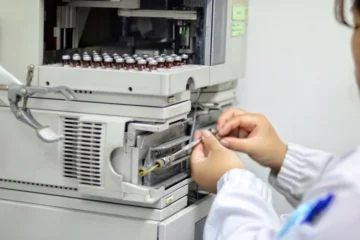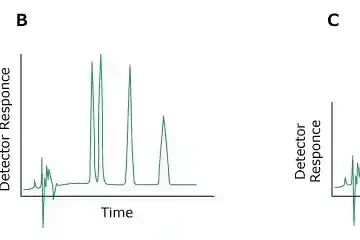High-Performance Liquid Chromatography (HPLC) is a powerful analytical technique widely used in various fields, from pharmaceuticals to environmental analysis. However, analysts often encounter challenges with poor peak shape and resolution, which can significantly impact the quality of results. This article aims to provide HPLC professionals with practical strategies for troubleshooting these common issues, enhancing both method reliability and data interpretation.
Understanding Peak Shape and Resolution
Peak Shape
Peak shape refers to the graphical representation of the detector response as a function of time. Ideally, peaks should be sharp and symmetrical, indicating that the compounds are well-separated and eluted from the column efficiently. Common peak shapes include:
- Gaussian Peaks: Ideal shape, indicating good separation.
- Asymmetric Peaks: May indicate problems with the column or mobile phase.
- Broad Peaks: Suggestive of poor separation or diffusion issues.
Resolution
Resolution (R) is defined as the ability to distinguish between two adjacent peaks. It is calculated using the formula:

A resolution greater than 1.5 is generally considered acceptable for reliable analysis.
Common Causes of Poor Peak Shape and Resolution
Several factors can lead to poor peak shape and resolution in HPLC. Understanding these causes is essential for effective troubleshooting.
1. Column Issues
- Column Age and Condition: Over time, columns can become clogged, lose packing material, or suffer from particle degradation, all of which can negatively impact peak shape.
- Incorrect Packing: Poorly packed columns can lead to irregular flow paths and result in broad or tailing peaks.
- Column Type: Using an inappropriate column for the analytes can cause poor retention and separation.
2. Mobile Phase Composition
- pH and Ionic Strength: The pH of the mobile phase can significantly affect the ionization state of analytes, impacting their retention and peak shape. Similarly, ionic strength can affect interactions with the stationary phase.
- Solvent Strength: If the solvent composition is not optimized, it may lead to inadequate elution of components, causing broad peaks.
3. Injection Issues
- Injection Volume: Overloading the column with too large an injection volume can lead to peak broadening and tailing.
- Sample Solvent: If the sample solvent is significantly different in polarity from the mobile phase, it can cause peak distortion.
4. Temperature Effects
- Column Temperature: Temperature fluctuations can affect viscosity and solubility, leading to variations in retention times and peak shape.
- Detector Temperature: Similarly, detector temperature can impact response time and baseline stability.
5. Instrumentation Problems
- Pump Malfunction: Inconsistent flow rates or pressure issues can lead to poor reproducibility and peak shape.
- Detector Calibration: Improper calibration of detectors may result in distorted or non-ideal peak shapes.

Troubleshooting Strategies
Step 1: Evaluate the Column
- Inspect the Column: Check for physical signs of wear or damage. If the column is significantly aged, consider replacing it.
- Repack or Regenerate: If feasible, repacking or regenerating the column may help restore performance.
- Column Type: Ensure that the column type and stationary phase are appropriate for your analytes.
Step 2: Optimize Mobile Phase Composition
- pH Adjustment: Analyze the pH of your mobile phase. Small adjustments can significantly affect peak shape and retention.
- Modify Solvent Strength: Conduct preliminary tests to adjust the ratio of organic to aqueous solvents to achieve optimal separation.
- Use Buffers: Incorporating a buffer can help stabilize pH and improve peak shape.
Step 3: Fine-Tune Injection Parameters
- Reduce Injection Volume: Start with a smaller injection volume to prevent column overload. Gradually increase to find the optimal volume.
- Sample Solvent Compatibility: Ensure the sample solvent is similar in polarity to the mobile phase. If not, consider diluting the sample in the mobile phase.
Step 4: Control Temperature
- Maintain Consistent Temperature: Use a column oven to maintain a stable temperature. This minimizes retention time variability and enhances reproducibility.
- Monitor Ambient Conditions: Be aware of environmental factors that may affect the temperature of the system.
Step 5: Check Instrumentation
- Pump Calibration: Regularly calibrate the pump to ensure accurate flow rates. Consider using a flow meter for verification.
- Detector Maintenance: Clean and calibrate detectors to prevent baseline noise and ensure accurate peak detection.
Step 6: Evaluate Data Acquisition Settings
- Sampling Rate: Ensure that the data acquisition rate is sufficient to capture the peak shape accurately. A higher sampling rate can provide more detail in peak representation.
- Integration Parameters: Review and adjust peak integration settings to ensure accurate quantification and peak area calculations.
Advanced Techniques for Improved Peak Shape and Resolution
1. Use of Additives
Adding small amounts of modifiers such as triethylamine or acetic acid to the mobile phase can improve peak shape and reduce tailing, especially for basic compounds.
2. Gradient Elution
Implementing gradient elution can enhance the resolution of closely eluting compounds. Start with a weaker solvent and gradually increase the strength to improve separation.
3. Multidimensional Chromatography
For complex mixtures, consider using two-dimensional HPLC, where the first dimension separates based on one property (e.g., size) and the second dimension separates based on another property (e.g., polarity).
Validation of Improvements
After implementing troubleshooting measures, it’s essential to validate the effectiveness of the changes. Re-evaluate peak shape and resolution using:
- Baseline Comparisons: Compare new chromatograms with previous runs to assess improvements.
- Resolution Calculations: Recalculate the resolution for key peaks to ensure they meet analytical requirements.
- Reproducibility Tests: Conduct repeatability tests to confirm that changes yield consistent results across multiple runs.
Troubleshooting poor peak shape and resolution in HPLC is a critical skill for analytical chemists and HPLC professionals. By systematically addressing potential causes—from column issues to mobile phase composition—you can significantly enhance the quality of your chromatographic analyses. Remember, maintaining good laboratory practices and regularly monitoring system performance are key to preventing these issues in the first place.
By adopting a proactive and methodical approach, HPLC professionals can not only solve current problems but also optimize their methods for future analyses, ensuring reliable and high-quality data. Whether you are working in pharmaceuticals, environmental testing, or food safety, mastering these troubleshooting techniques will elevate your analytical capabilities and contribute to your success in the field.




